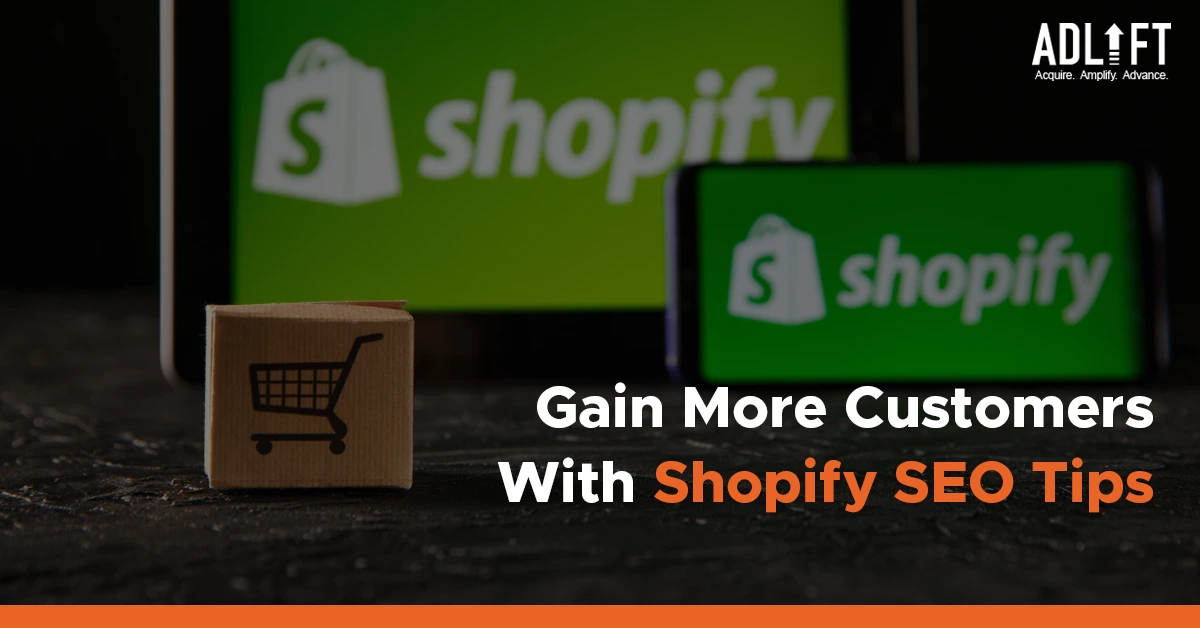Unlock the Power of SEO for Shopify With These Tips

In today’s digital world, having a strong online presence is crucial for the success of any business. For e-commerce entrepreneurs using Shopify as their platform of choice, optimizing their websites for search engines is essential to drive organic traffic and boost sales. In this article, we will delve into the world of Search Engine Optimization (SEO) and provide you with actionable tips on how to improve SEO on Shopify stores. By implementing these strategies, you can improve your website’s visibility, attract more visitors, and ultimately increase your revenue.
Conduct Keyword Research
The first step in learning how to do SEO on Shopify is to understand the importance of keywords. Start by identifying relevant keywords and phrases that are frequently searched by your target audience. Tools like Google Keyword Planner and SEMrush can help you discover high-volume keywords with low competition. Incorporate these keywords strategically into your website’s content, including product descriptions, meta tags, URLs, and headings, to increase your chances of ranking higher in search engine results.
Optimize Your Product Pages
Product pages are the heart of your Shopify shop. To optimize them for search engines, follow these best practices on how to improve SEO on Shopify:
Write Unique and Compelling Product Descriptions
The next step to improve SEO on Shopify is to craft unique and compelling product descriptions that highlight the benefits, features and unique selling points of your products. Avoid using generic manufacturer descriptions, as they can negatively impact your SEO. Incorporate relevant keywords naturally while ensuring readability and coherence.
Optimize Image Alt Text
Search engines cannot interpret images, but they can understand the alt text associated with them. Include descriptive alt text for your product images, incorporating relevant keywords where appropriate. This practice helps improve SEO on Shopify, enhances accessibility for visually impaired users and provides additional context for search engines.
Streamline URL Structure
Ensure your product URLs are concise, descriptive, and contain relevant keywords. A clean URL structure improves both user experience and search engine crawlability.
Create High-Quality Content
Content is king when it comes to SEO. Creating high-quality and engaging content not only attracts visitors but also establishes your store as a reputable source of information. Consider the following content types for your Shopify store:
Blog Posts and Articles
Maintain an active blog where you can publish informative and valuable content related to your industry, products, or niche. Write articles that address your customers’ pain points, provide solutions, and offer insights. Incorporate relevant keywords naturally and share your blog posts on social media platforms to attract more visitors.
Video Content
Video content has become increasingly popular and can significantly improve your SEO on Shopify. Create product demonstration videos, tutorials, or engaging content related to your niche. Embed these videos on your product pages or share them on video platforms like YouTube. Don’t forget to optimize the video titles, descriptions, and tags with relevant keywords.
User-Generated Content
Encourage your customers to leave reviews, testimonials, or user-generated content (UGC). This not only helps build trust and credibility but also generates fresh and unique content for your store. User-generated content often includes keywords and phrases that resonate with your target audience, boosting your SEO efforts.
Improve Website Performance
A fast and responsive website is crucial for both user experience and SEO. Follow these optimization techniques to enhance your Shopify store’s performance:
Mobile-Friendly Design
Ensure your website is optimized for mobile devices. With the majority of internet users accessing the web through smartphones, having a responsive design is vital. Google also prioritizes mobile-friendly websites
Page Load Speed
Optimize your website’s loading speed to provide a seamless browsing experience. Slow-loading pages can negatively impact user engagement and search engine rankings. Minimize file sizes, leverage browser caching, and optimize images to improve your site’s performance. Consider using a Content Delivery Network (CDN) to serve your content from servers located closer to your visitors.
Simplify Navigation
Ensure your website’s navigation is intuitive and user-friendly. A clear and organized menu structure helps visitors find what they’re looking for quickly and easily. Incorporate relevant keywords into your navigation labels and create a logical hierarchy of pages. This enhances both user experience and search engine crawlability.
Conclusion
Incorporating this effective shopify seo guide into your Shopify store can have a profound impact on your online visibility, organic traffic, and, ultimately, your sales. By following this shopify SEO guide, including conducting keyword research, optimizing your product pages, creating high-quality content, improving website performance, building backlinks, and leveraging social media, you can unlock the power of SEO and propel your Shopify store to new heights.
Remember, SEO is an ongoing process, so continue to monitor your website’s performance, adapt your strategies, and stay up-to-date with the latest industry trends to maintain your competitive edge in the online marketplace
FAQs
Ans: SEO is crucial for Shopify websites as it helps improve their visibility in search engine results, drives organic traffic, increases sales, and enhances the overall online presence. It allows potential customers to discover the website and promotes its growth and success.
Ans: SEO can improve the visibility of your Shopify store by optimizing your website’s content, meta tags, and URLs for relevant keywords. It can also help you build quality backlinks, improve site speed, and create a positive user experience, which can increase your store’s search engine rankings and organic traffic.
Ans: Yes, there are specific SEO techniques that work well for Shopify websites. Some effective methods include optimizing product titles and descriptions, improving site speed, using relevant keywords in page URLs, and implementing structured data markup for better search engine visibility.
Ans: Some common SEO mistakes to avoid when optimizing a Shopify store include neglecting keyword research and ignoring meta tags and descriptions. Also, having poor website structure and navigation, failing mobile optimization, and lacking high-quality and relevant content are common SEO mistakes.
Ans: The timeframe for seeing results from SEO efforts on a Shopify website can vary. Changes typically take several months to be reflected in search engine rankings. Factors such as website age, competition, and the effectiveness of SEO strategies can influence the time it takes to see noticeable improvements.
Ans: You can optimize your Shopify for SEO by following best practices and using available resources. However, hiring a professional can provide expertise and save you time, especially if you need to become more familiar with SEO techniques or want to achieve optimal results efficiently.
Ans: Yes, several Shopify apps and plugins are available to help with SEO optimization. Some popular options include SEO Manager, Plugin SEO, and Smart SEO. These tools can assist in optimizing meta tags, generating XML sitemaps, improving website speed, and providing other features to enhance SEO performance.
Ans: When choosing keywords for your Shopify store, consider relevance to your products, search volume, and competition. Use keyword research tools to identify popular and low-competition keywords. Opt for long-tail keywords that reflect customer intent, and incorporate them strategically in your product titles, descriptions, and meta tags to improve search engine visibility.
Ans: Content plays a crucial role in SEO for Shopify websites. High-quality, relevant content helps improve search engine rankings, drives organic traffic, and engages website visitors. It is essential to optimize content with relevant keywords, provide valuable information, and ensure it is user-friendly and shareable.

